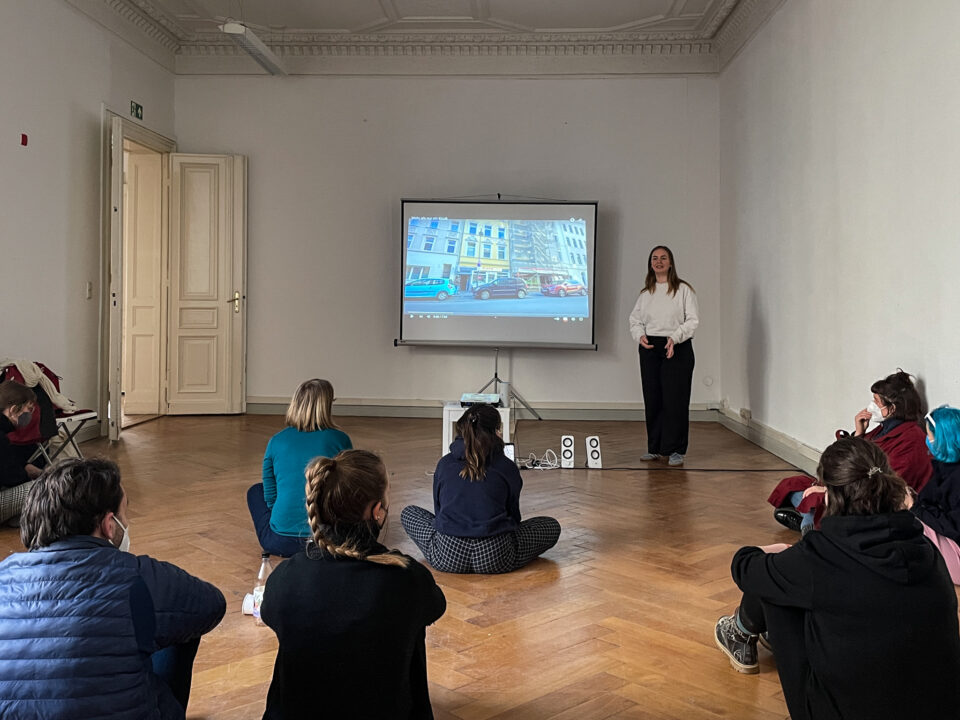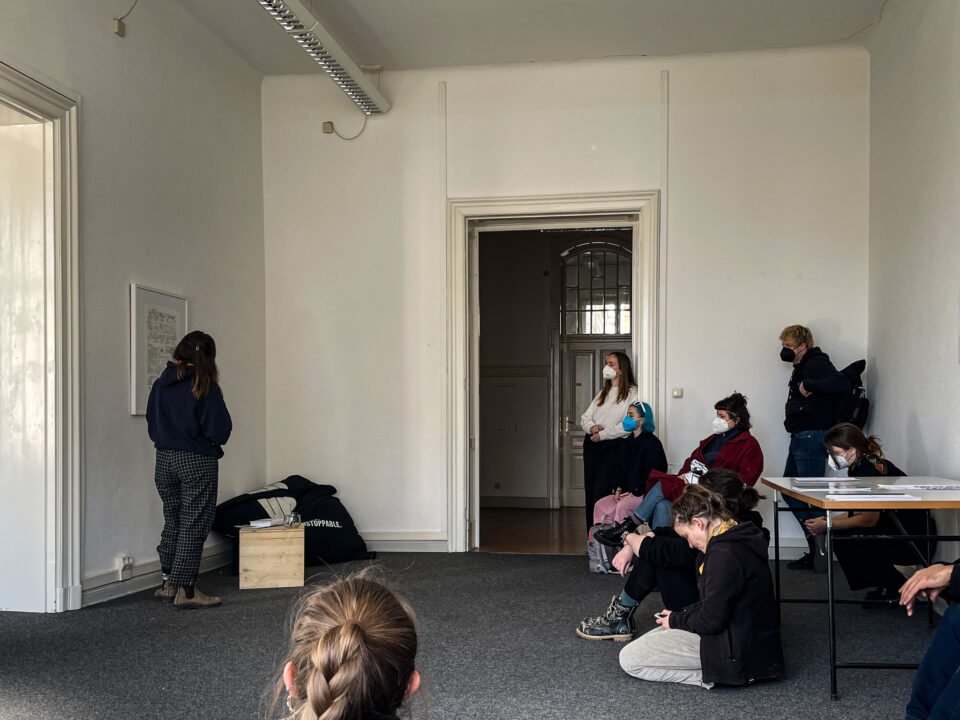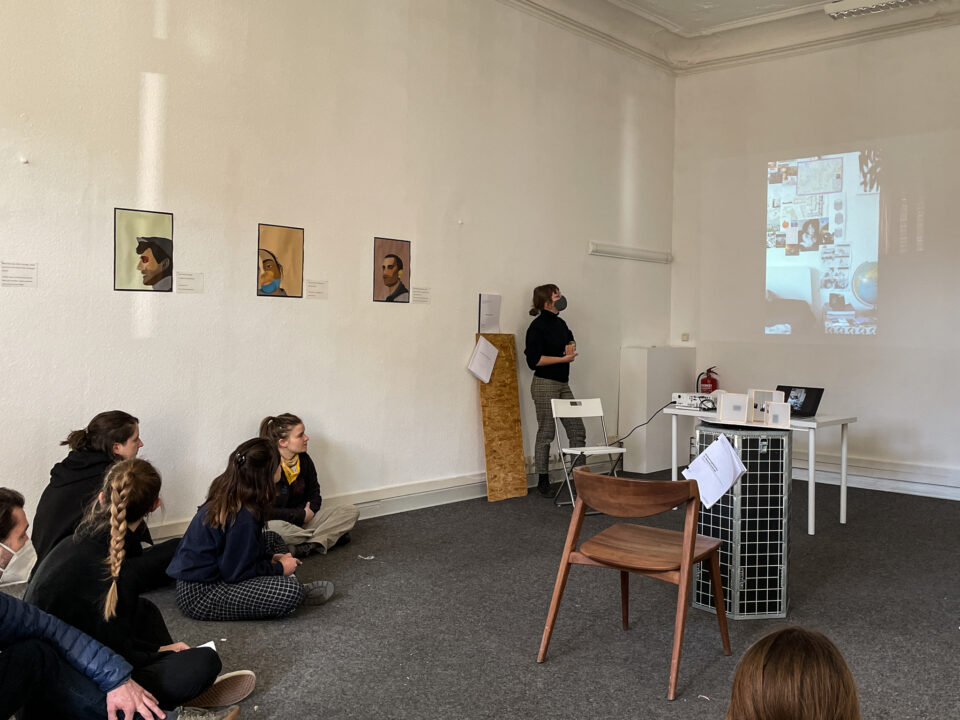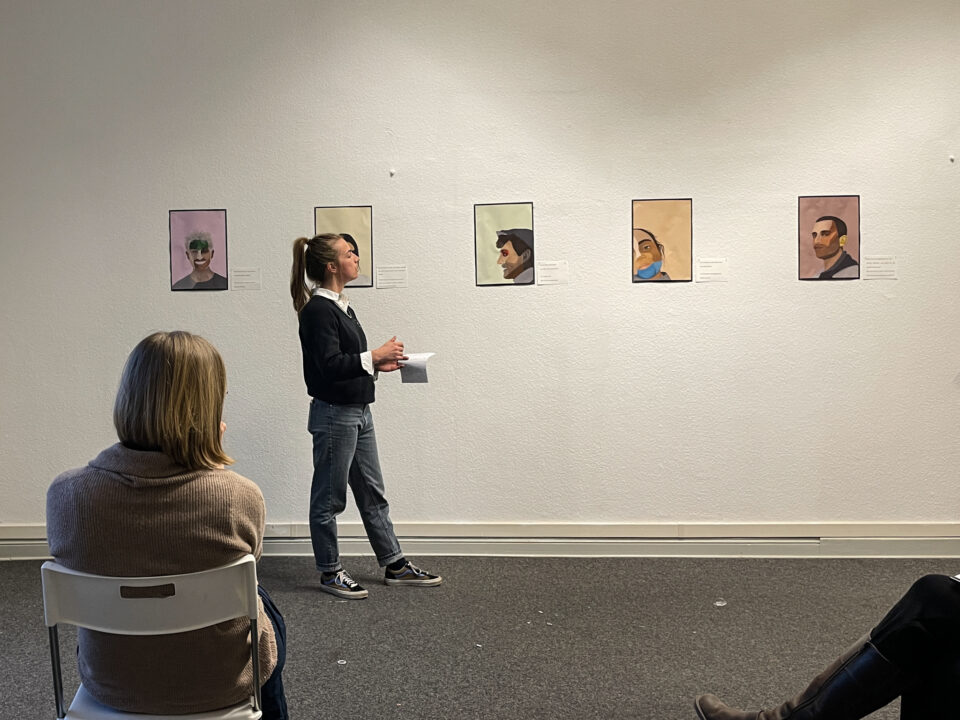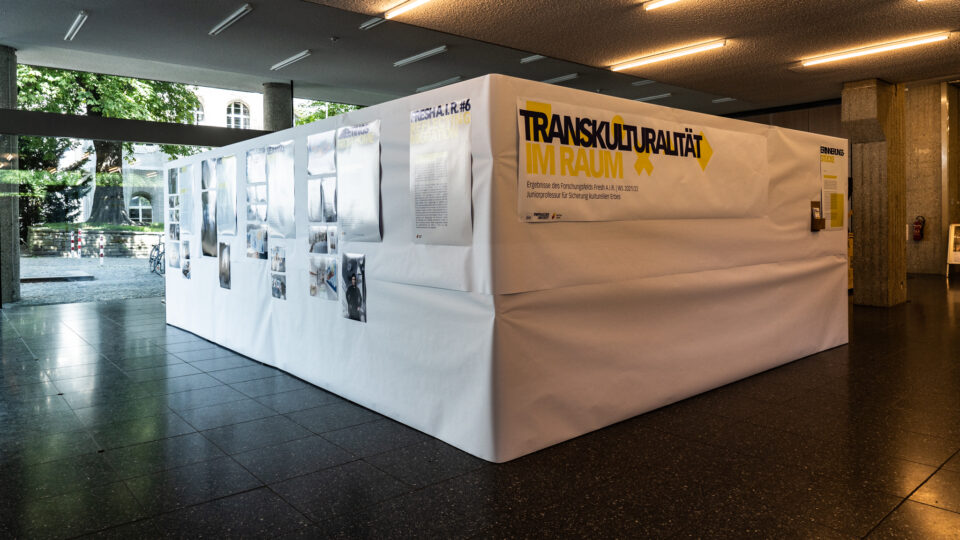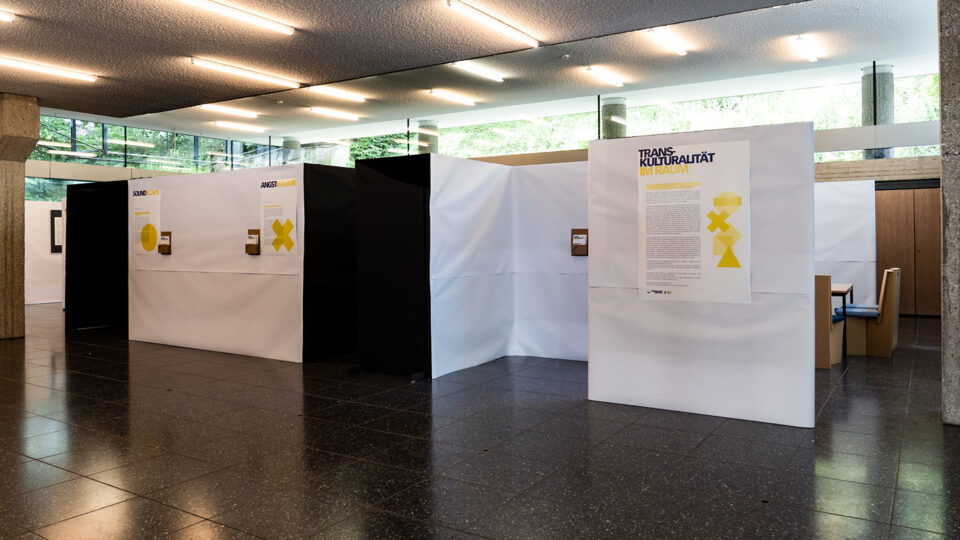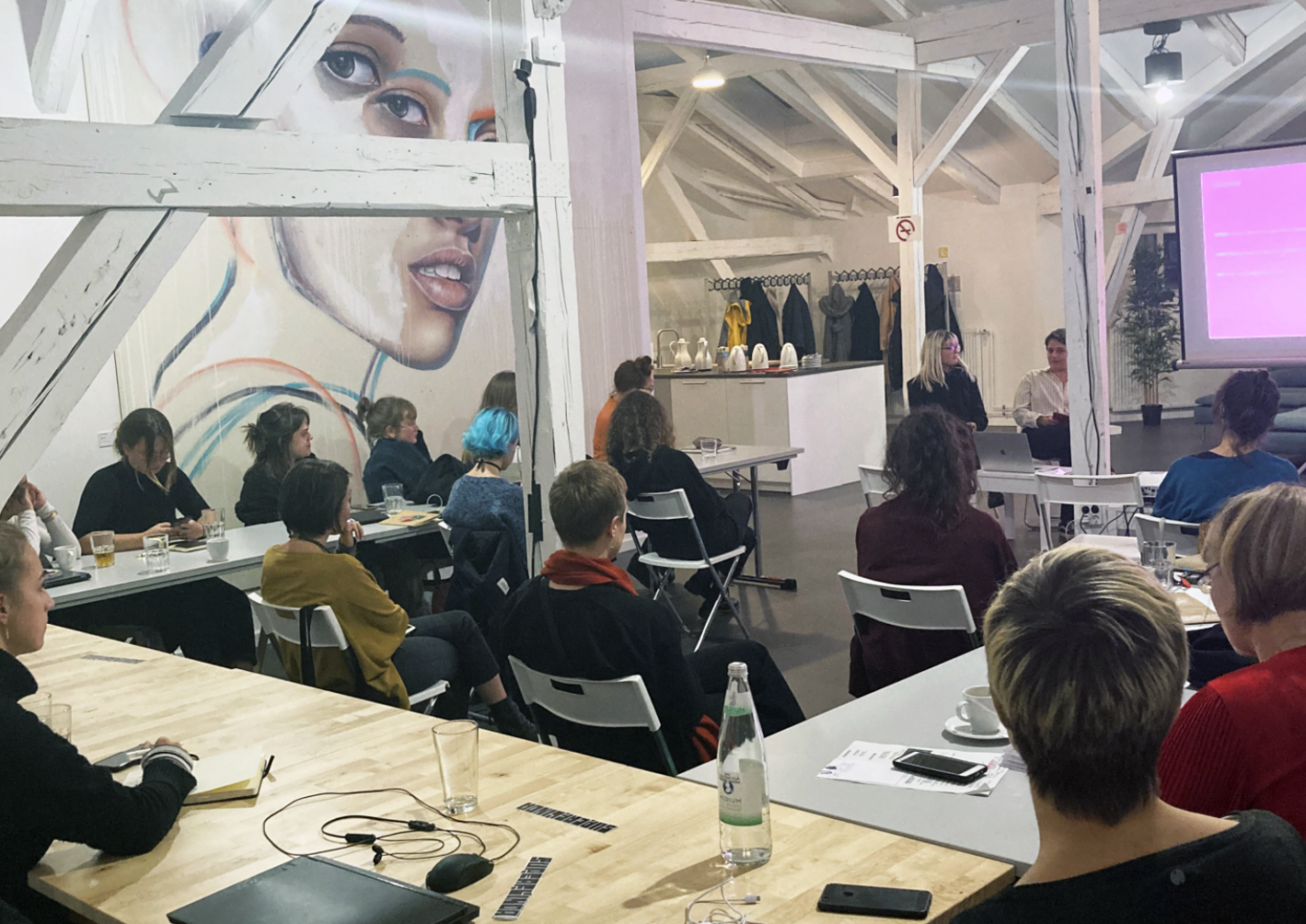
TRANSCULTURALITY IN SPACE – Fresh A.I.R. in exchange with students of RWTH Aachen University.
- October 28, 2022
Cities are places of migration, of arriving, staying and leaving. They offer spaces in which people with their cultural identities and individual life stories meet, develop with each other and allow something new to emerge. In return, this shapes the perception and appropriation of urban spaces. Urban space is thus the occasion, indicator and venue of transculturality.
This thematic complex was also encompassed by the exhibition “Reflecting Migration” of the sixth year of the Fresh A.I.R. artist-in-residence scholarship program, whose director Janine Arndt invited students of the Junior Professorship for Securing Cultural Heritage under Prof. Dr.-Ing. Carola Neugebauer of RWTH Aachen University to engage with the works of the 12 international Fresh A.I.R. artists and to absorb impulses for their own research topics.
In the consecutive winter and summer semesters of 2021/22, the Aachen master students of the seminar Transculturality, Migration, and the City devoted themselves to individually chosen topics and conducted research on them in exchange with the Fresh A.I.R. residents. They met in two face-to-face workshops in the fall of 2021 and spring of 2022 in Berlin, shortly before the opening of the exhibition “Reflecting Migration” in the premises of the Stiftung Berliner Leben.
The objective of the interdisciplinary teaching formats was the two-way – scientific and artistic – examination of the socially highly relevant processes of migration and transculturality that shape urban space: the students of the winter semester conducted their first self-designed primary research according to scientific standards and were subsequently guided by Janine Arndt to artistically reflect on their research process or its results.
The students of the summer semester took up these results and, with the support of master students of architecture, developed them into an exhibition, which was on display in the REIFF Foyer in Aachen on June 13 and 14, 2022. The exhibition focused on the presentation of the students’ work – scientific and artistic – and at the same time made the work of Fresh A.I.R. #6 at the University in Aachen visible.
Students’ visit to Fresh A.I.R. and subsequent exhibition in the Reiff Foyer in Aachen.
Students of the research field “Fresh A.I.R.: Migration, Transculturality and City” (winter semester 2021/22): Sophia-Franziska Bouveret, Lena Maria Castrup de Arnedo, Mohammad Nabeel Jamal, Friederike Macher, Teresa Schreer, Marina Sedda, and Katharina Stommel.
Students of the seminar “Migration, Transculturality and the City – the Exhibition” (summer semester 2022): Ann-Kristin Bierotte, Svenja Dornik, Simon Jochade, Julia Kasparek, Hannah Lemler, Charles David Lueke, and Marica Vitt.
Supervisors in both semesters: Prof. Dr.-Ing. Carola Neugebauer and Hannah Nowak
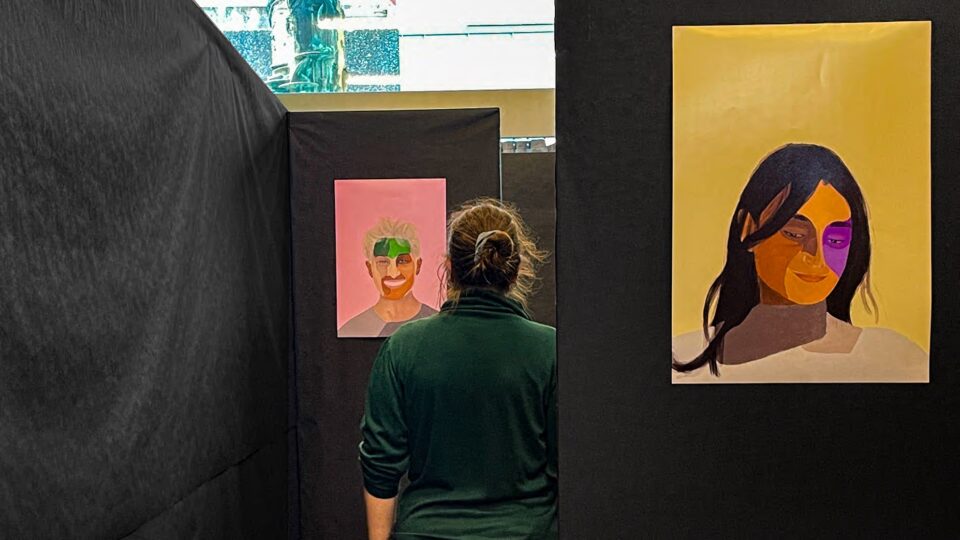
Students of the Junior Professorship of Securing Cultural Heritage, RWTH Aachen University, engage with Fresh A.I.R. Year #6
Sophia-Franziska Bouveret conducted research on the topic of “Anxiety Spaces in the City” and dealt with the perception of these spaces. The work focussed on the question whether there are differences between the anxiety spaces of people with and without a migration background and whether there are also differences between the sexes.
In her study, the author first elaborated on basics from the literature and presented how anxiety spaces develop and which social as well as urban factors contribute to them. She then conducted guided interviews with five people who described their anxiety spaces in Aachen. The work shows on the one hand that spaces of anxiety are perceived subjectively, depending on gender, origin and age. On the other hand, it becomes clear that migrant-influenced city neighbourhoods are not among Aachen’s anxiety spaces, and that people with a migration background primarily fear spaces in which they have already encountered racism.
The art project “Angsträume” shows the portraits of the five interview partners of Sophia-Franziska Bouveret. The portraits show characteristic features of the persons and mark the specific areas that were central to the perception of the spaces of anxiety.
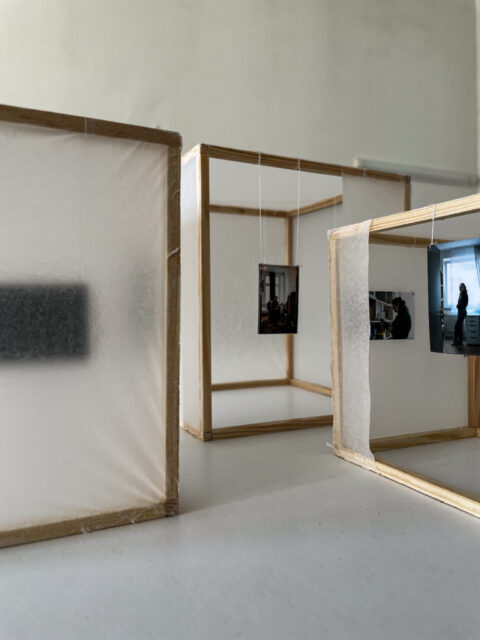
Students of the Junior Professorship of Securing Cultural Heritage, RWTH Aachen University, engage with Fresh A.I.R. Year #6
In her research, Teresa Schreer dealt with souvenirs that international students brought with them to Aachen as reminders of their homeland. She focused on the analysis of the object-space relationship, i.e. on the question of where in the private living space these souvenirs are kept and why.
For this purpose, the author compared the placement of these objects of remembrance in the living space back in the abandoned homeland with that in Aachen. From these object-space relationships, she reconstructed the shifts in meaning that the objects underwent and drew conclusions about the students’ individual memories. Part of the research was the author’s intensive study of existing literature: she dealt with the concept of home, homesickness, and the function of “souvenirs” as carriers of memories. Building on this study of literature, Teresa Schreer conducted guided interviews with four interviewees.
In the exhibition, the art project presents the souvenirs and the interview partners in their private living spaces in the form of photographs. The photographs are fixed in different positions in the exhibition boxes, which mark the original placements in the space.
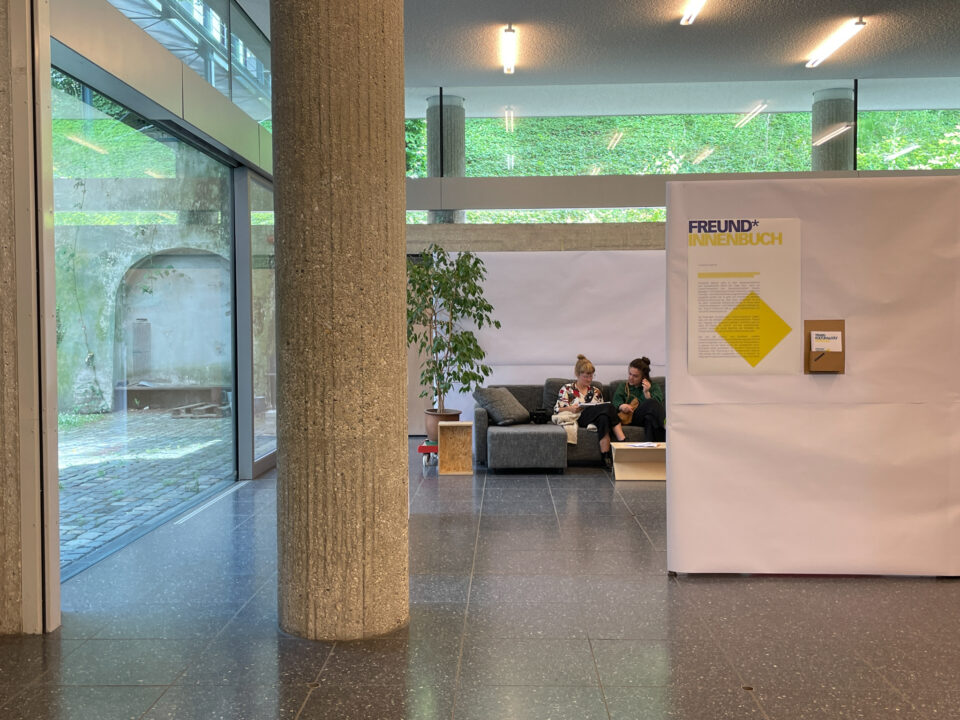
Students of the Junior Professorship of Securing Cultural Heritage, RWTH Aachen University, engage with Fresh A.I.R. Year #6
In her scientific and artistic work, Friederike Macher investigates the question: ”Can a friend book contribute to critical thinking about racism?” Her project is a friend book, which has been filled out in the circle of friends or acquaintances and is to be filled out further. It is based on the core finding of current racism research that racism is systemic and requires above all individual reflection processes in the sense of a “critical whiteness” in the majority society. The Freund*innenbuch invites this self-reflection and initiates thought processes. The evaluations of the Freund*innenbuch so far show that the respondents are in very different phases of dealing with racism: The dominant phases are, above all, phase four “blame” and phase five “recognition”. Ultimately, the vast majority of respondents perceived the Freund*innenbuch as a personal enrichment.
The friend book created by the author and artist was exhibited as an art object. Visitors were invited to take a moment of self-reflection and fill in the blank pages of the book on display themselves. The artist translated the results of her research into an artistic medium and created a comic in which she herself goes through the process of her research as a comic figure.
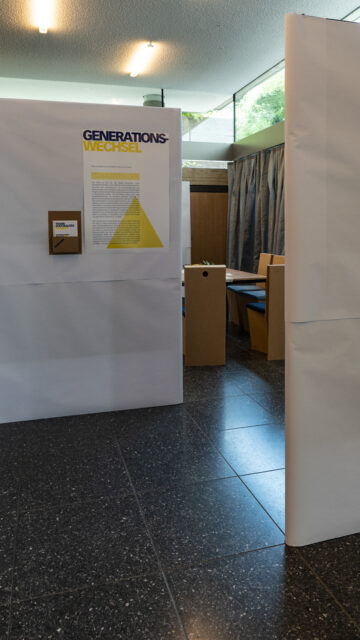
Students of the Junior Professorship of Securing Cultural Heritage, RWTH Aachen University, engage with Fresh A.I.R. Year #6
How does it feel to be the second generation of an immigrant family? What differences exist between the generations? The research work of Marina Sedda and Lena Maria Castrup de Arnedo took up these questions, which continue to arise in immigrant families in Germany. The authors asked two immigrant families to enter into a familiar family conversation and to share their experiences of three generations in Germany. As a result, Marina Sedda and Lena Maria Castrup de Arnedo draw mini-family portraits that make the intergenerational differences in the perception of experienced acceptance and exclusion in everyday German urban life very clear. It is a report on different cultures and their co-existence in cultural safe spaces as well as experiences of everyday racism of the different generations.
The artistic examination of the topic is a film. It shows authentic excerpts from one of the two family conversations that took place after the actual interview with the researchers. The living room of the interviewed family, which remains anonymous, can be seen. The room reflects the usual, familiar atmosphere. The family discussion proceeds without intervention by the researchers. Rather restrained at the beginning, in the course it succinctly brings the essential differences in perception to the point. It is worthwhile to follow the intimate conversation and draw one’s own self-critical conclusions.
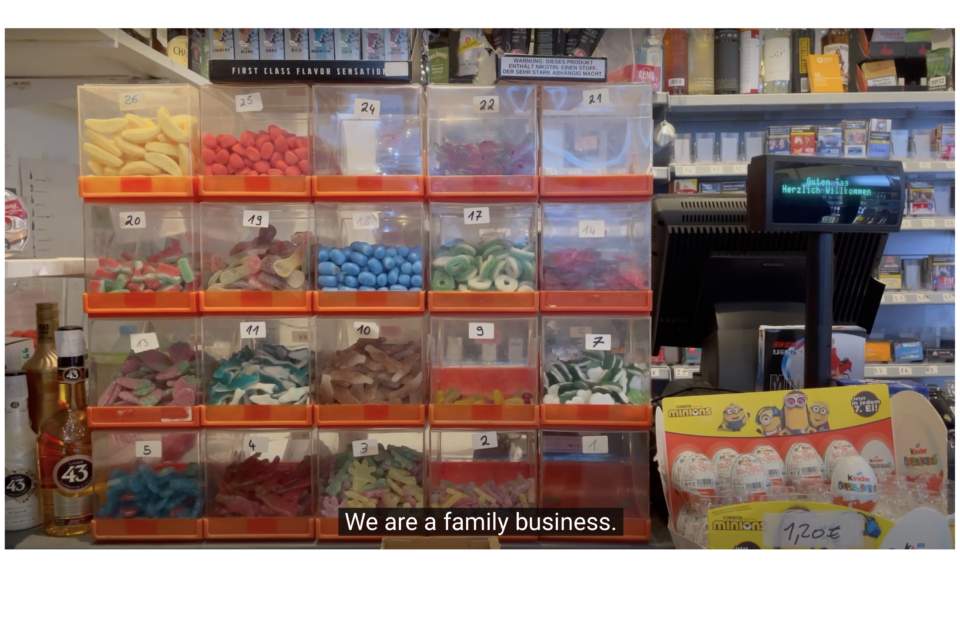
Students of the Junior Professorship of Securing Cultural Heritage, RWTH Aachen University, engage with Fresh A.I.R. Year #6
What role does the kiosk play in everyday life? What spatial and cultural potential does it hold for people and their neighbourhood? Katharina Stommel explored these questions in her research and art project “The Kiosk as a Place of Intercultural Exchange”.
The work is based on an academic study of the literature, which outlines the state of research on migrant economies in German cities and traces the history of the development of the kiosk. Based on this, Katharina Stommel conducted an ethnographically influenced individual case study of Cologne’s “Kiosk One”, which included systematic observation of the exterior and interior of the retail space, including the product range, furnishings, and sounds, as well as an interview with the shopkeeper.
The result was a scenic, impressive, short documentary film. The video shows the kiosk’s inventory, product variety, and spatial organization, while the kiosk owner explains these findings in their multiple layers of meaning. The conclusion of the research and art project? Yes, the kiosk is a valuable, small place of intercultural exchange and encounter in the neighbourhood that we should definitely pay more attention to.
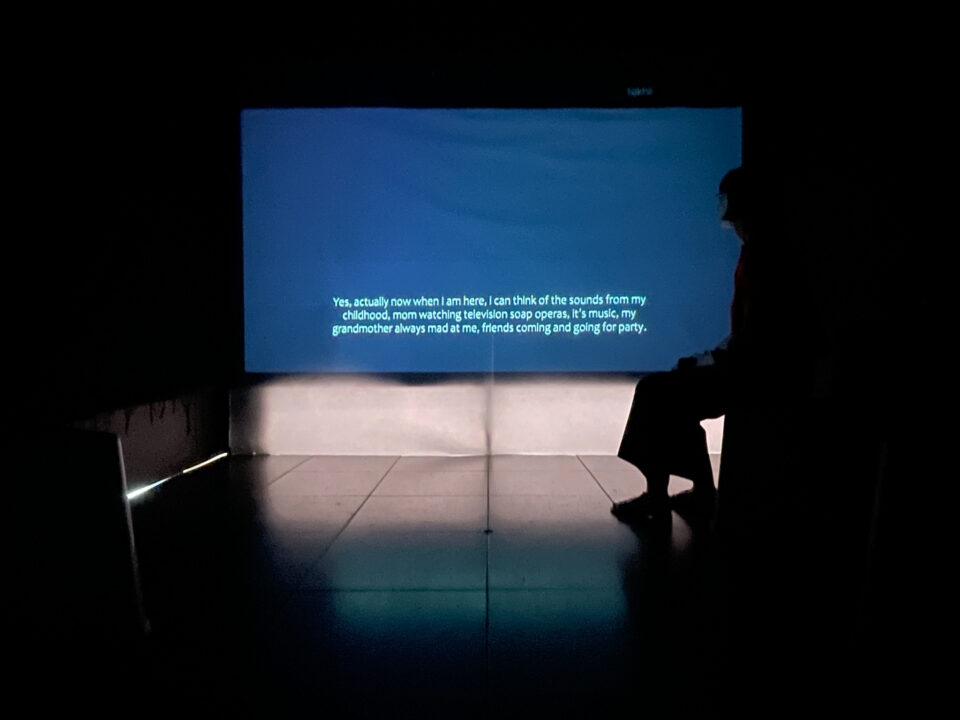
Students of the Junior Professorship of Securing Cultural Heritage, RWTH Aachen University, engage with Fresh A.I.R. Year #6
In his research and art project, Mohammad Nabeel Jamal addresses the perception of sounds in residential and urban space and their biographical as well as culturally connoted contexts. A literature research brought forth the term “aural architecture”. This deals with the perception of sounds in spaces and their effects on the listener. Using a standardized questionnaire with open and closed questions as well as sound studies, Mohammad Nabeel Jamal investigated the question of which sounds in everyday life signal familiarity and well-being or strangeness and disturbance for international students at RWTH Aachen University.
The exhibited art project is a video that reflects the soundscape experiences of the international students interviewed and combines them with their own statements recorded in their native language. The sounds belong to the interviewee and recall their described perceptions. In parallel, the individual connections to them are being addressed.
